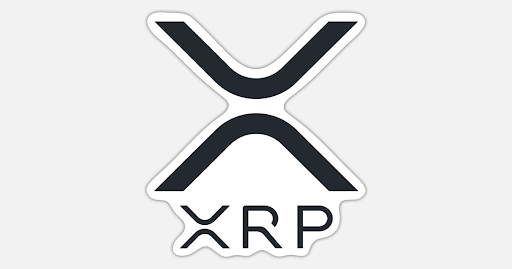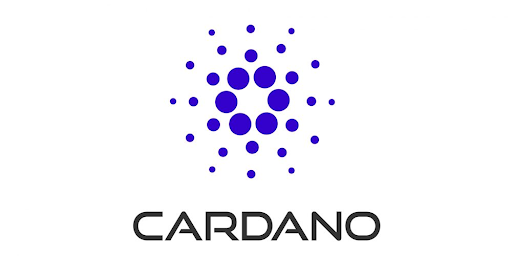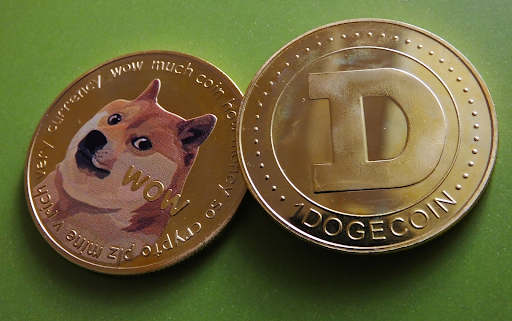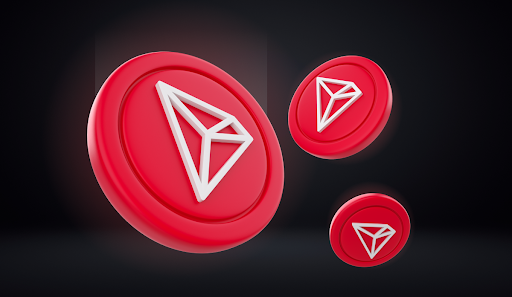Cryptocurrency is no longer just a buzzword; it’s rapidly evolving in the financial world. But, while Bitcoin and Ethereum dominate headlines, not everyone can afford to buy into these giants.
This is where cheap cryptocurrencies come into play. So many budding investors are looking for high-potential coins that won’t break the bank. The idea of investing in cheap cryptocurrencies may seem risky to some, but many of today’s crypto giants started as unknowns with bargain-basement prices.
Imagine what it would have been like to invest in Bitcoin when it was only a few dollars. That’s the beauty of low-cost coins: you’re buying into a project that has the potential to “explode” in value.
In this article, we will explore the best cheap cryptocurrencies that could offer significant returns in the future. This is for people hunting for the next big win, and these affordable coins can provide a low-risk entry into the market.
Top 10 Cheap Cryptocurrencies That Will Explode
Investing in affordable cryptocurrencies can be like finding diamonds in the rough. Some of these coins may seem small now, but they have the potential to grow into the giants of tomorrow.
Look at some of the top cheap cryptocurrencies that could increase in value over the next few years.
1. Ripple (XRP)
Ripple is one of the most talked-about cryptocurrencies, and for good reason. XRP aims to revolutionize international payments by offering fast, low-cost cross-border transactions

Unlike traditional banking methods, which can take days to process transfers, Ripple can settle transactions in seconds. This makes it highly attractive for banks and financial institutions looking to improve efficiency.
Additionally, XRP’s partnership with major financial players has cemented its position as a key player in the crypto world.
Although XRP’s price has remained relatively low compared to Bitcoin, it has strong growth potential due to its real-world use cases in the financial industry.
2. Stellar (XLM)
Stellar Lumens (XLM) is often compared to Ripple but focuses more on connecting people and financial institutions, particularly in underserved regions.

Stellar aims to facilitate low-cost cross-border transactions, making financial services more accessible to those without bank accounts. Using Stellar, anyone can send money anywhere in the world quickly and affordably.
Stellar’s partnerships with companies like IBM have boosted its credibility, and its strong focus on financial inclusion has positioned it as a promising cryptocurrency for the future.
With a current low price, XLM could be a wise investment for those looking for long-term growth.
3. Cardano (ADA)
Cardano is another low-cost cryptocurrency with tremendous upside potential. Its developers have taken a systematic, research-driven approach to building the blockchain, focusing on security, scalability, and sustainability.

Cardano’s proof-of-stake system is considered more energy-efficient than Bitcoin’s proof-of-work model, making it a more environmentally friendly option.
One key reason investors are optimistic about Cardano is its focus on smart contracts, similar to Ethereum. ADA could see significant price increases as the platform evolves, especially if its smart contract ecosystem gains widespread adoption.
4. Polygon (MATIC)
Polygon is a Layer 2 scaling solution for Ethereum, designed to make the Ethereum blockchain faster and more efficient.

As Ethereum struggles with high gas fees and slow transaction times, Polygon has emerged as a powerful solution.
The MATIC token secures and governs the Polygon network. With Ethereum still at the heart of decentralized finance (DeFi), Polygon’s utility and demand will likely rise.
MATIC is worth considering if you’re looking for a cryptocurrency that could benefit from Ethereum’s growth.
5. Solana (SOL)
Solana has been dubbed the number 1 “Ethereum killer” because of its breakneck transaction speeds and low fees. It is one of the fastest blockchains, processing up to 65,000 transactions per second.

This has made it a favorite for developers building decentralized apps (dApps), DeFi projects, and NFTs.
The SOL token has shown steady growth, and with the increasing demand for scalable blockchain solutions, Solana could be a major player. Despite recent volatility, its low price makes it attractive for investors seeking high growth potential.
6. Ethereum (ETH)
While Ethereum may not be considered “cheap” compared to others on this list, it is still more affordable than Bitcoin and has considerable growth potential.

Ethereum is the backbone of decentralized finance, hosting thousands of decentralized applications (dApps), NFTs, and smart contracts.
The recent Ethereum 2.0 upgrade aims to make the network more scalable, secure, and sustainable. This upgrade has already sparked renewed investor interest, and as the platform becomes faster and more efficient, ETH’s price could soar even higher.
Ethereum is a solid choice for those investing in a slightly more expensive but highly influential cryptocurrency.
7. Dogecoin (DOGE)
Initially created as a joke, Dogecoin defied expectations and became a cryptocurrency with real value. Thanks to endorsements from high-profile figures like Elon Musk, Dogecoin has gained immense popularity, and its price surged in 2021.

While its value has stabilized, DOGE remains one of the cheapest cryptocurrencies, and there is potential for another surge.
Dogecoin’s large, dedicated community and low price make it an appealing option for risk-tolerant investors.
Though it may lack the serious backing of other projects, its viral popularity keeps it in the conversation as a potential “explosive” investment.
8. TRON (TRX)
TRON is a decentralized platform that aims to revolutionize the content-sharing and entertainment industry by allowing creators to share their content without relying on third-party platforms. Its mission is to decentralize the internet, giving users control over their data and content.

TRON’s partnerships with major tech companies and its focus on user content make it an exciting cryptocurrency with long-term potential. With a very low price point, TRX offers an affordable entry into a project with big ambitions.
9. Toncoin (TON)
Toncoin, developed initially by Telegram, has gained attention for its focus on fast, scalable transactions and privacy. Although Telegram eventually withdrew from the project, the community took over, and TON has continued evolving.

The TON blockchain is designed to support a wide range of decentralized applications (dApps) and services, making it versatile and adaptable. With a growing user base and development community, Toncoin is a promising, low-cost cryptocurrency that could surprise investors in the future.
10. Chainlink (LINK)
Chainlink is a decentralized oracle network that enables smart contracts on blockchains to interact securely with external data. In simpler terms, Chainlink connects blockchain technology with real-world data, crucial for creating more advanced decentralized applications.

With partnerships spanning industries from insurance to gaming, Chainlink is quickly becoming an integral part of the crypto ecosystem.
The demand for reliable data in the blockchain world makes LINK a valuable asset with the potential for significant growth.
How to Identify Explosive Cryptocurrencies
Investing in cheap cryptocurrencies that have the potential to explode is more than just a matter of luck.
It requires careful research, strategic thinking, and an understanding of market trends.
1. Research and Analysis
The first step in identifying explosive cryptocurrencies is thorough research. You want to understand the coin’s price and the project behind it. Here are some key areas to explore:
- The Team: Who is behind the cryptocurrency? A strong development team with experience in blockchain technology is a positive sign. Check if they have a history of delivering on their promises and whether they are transparent about their work.
- The Project: What problem is the cryptocurrency solving? Does it have a unique value proposition, or is it just another copycat coin? Projects with real-world applications, such as improving payment systems, decentralizing the internet, or enabling smart contracts, often have higher potential.
- The Roadmap: Look for a clear, well-defined roadmap with achievable goals. A project with a strong vision and regular progress updates is more likely to succeed.
2. Technical Indicators
Technical analysis is a valuable tool for spotting potential winners in the cryptocurrency space.
By analyzing price charts and indicators, you can identify patterns and trends that suggest whether a cryptocurrency is poised for a breakout. Some of the key technical indicators to consider include:
- Moving Averages (MA): Moving averages help smooth out price data to reveal a cryptocurrency’s overall direction. If the short-term moving average crosses above the long-term moving average (a “golden cross”), it could signal the start of a bullish trend.
- Relative Strength Index (RSI): RSI measures the magnitude of recent price changes to evaluate whether a cryptocurrency is overbought or oversold. A reading above 70 suggests that the coin might be overbought, while a reading below 30 indicates it might be oversold and due for a bounce.
- Trading Volume: An increase in trading volume can indicate growing interest in a cryptocurrency, often preceding price increases. Low trading volume may suggest that the cryptocurrency is losing momentum.
- Market Sentiment: Tools like Fear and Greed Indexes for the crypto market help gauge whether traders feel overly optimistic or pessimistic. Periods of extreme fear signal buying opportunities, while extreme greed suggests a market correction is due.
3. Community Engagement
Community engagement indicates a project’s potential in the cryptocurrency world.
A large, active community often means excitement around the cryptocurrency, which can help drive its growth. Here’s what to look for when assessing community engagement:
- Social Media Presence: Check platforms like Twitter, Reddit, and Telegram to see how active the cryptocurrency community is. Projects with a strong, engaged following tend to have more momentum.
- Developer Activity: Look at platforms like GitHub to see how active the development team is. Frequent updates and improvements show that the team is committed to the project’s success.
- Partnerships and Collaborations: A cryptocurrency project with solid partnerships (e.g., Ripple’s connections with banks or Chainlink’s partnerships with data providers) has a better chance of long-term success.
An engaged community can also provide valuable insights into a project’s strengths and weaknesses. People often share news, updates, and technical insights to help you make informed investment decisions.
4. News and Updates
The cryptocurrency market moves quickly, and staying up-to-date with the latest news and developments is crucial for identifying explosive cryptocurrencies.
Major announcements, partnerships, or regulatory news can cause significant price movements, so being informed gives you an edge.
- Follow Industry News: Use trusted news sources like CoinDesk, CoinTelegraph, or Binance Academy to stay updated on significant industry developments. New regulations, exchange listings, or technology upgrades can significantly impact cryptocurrency prices.
- Track Social Media: Social media platforms like Twitter or forums like Reddit are often where crypto news breaks first. Following key influencers, developers, and crypto enthusiasts can help you get the latest information before the mainstream media catches on.
- Monitor Roadmap Milestones: Monitor the project’s roadmap. If a project is nearing a significant milestone (like a new network upgrade or a partnership announcement), it can create hype and increase demand for the cryptocurrency.
Risks and Considerations in Crypto Investment
While the attraction of cheap cryptocurrencies with explosive potential is undeniable, it’s essential to recognize that investing in crypto is not without risks.
Cryptocurrencies are a highly volatile asset class, and prices can swing dramatically quickly. To navigate this market effectively, you must know the risks and how to lessen them.
1. Market Volatility
Cryptocurrency prices can be highly volatile, especially for low-cost coins. A coin that looks like a bargain today could drop in value tomorrow, wiping out gains in hours.
The highly speculative nature of the market can lead to sudden price spikes and crashes.
- Price Swings: Cheap cryptocurrencies are often more prone to significant price fluctuations than established coins like Bitcoin or Ethereum. While these price movements can create profit opportunities, they also come with the risk of substantial losses.
- FOMO and Panic Selling: Emotional reactions, like the fear of missing out (FOMO) or panic selling, can amplify market volatility. Many investors rush to buy when prices are surging, only to panic-sell when the market dips, locking in their losses.
How to Reduce Volatility Risks:
- Diversify Your Portfolio: Spread your investments across multiple cryptocurrencies and other asset classes (like stocks or bonds) to reduce the impact of any single asset’s price swings.
- Dollar-Cost Averaging: Instead of trying to time the market, consider investing a fixed amount at regular intervals (e.g., weekly or monthly). This strategy helps smooth out your entry points and reduces the impact of short-term volatility.
- Set Realistic Expectations: Understand that volatility is part of the cryptocurrency market. Accepting that prices will fluctuate can help you remain calm and avoid emotional decision-making.
2. Regulatory Uncertainty
Cryptocurrencies exist in a relatively unregulated space, posing opportunities and risks. Governments worldwide are still figuring out how to regulate this rapidly evolving market, and regulatory changes can significantly impact the price and adoption of cryptocurrencies.
- Bans and Restrictions: Some countries have banned or heavily regulated cryptocurrency trading, which can limit market access and reduce liquidity. News of potential government crackdowns can trigger market-wide sell-offs.
- Tax Implications: Many countries treat cryptocurrency gains as taxable income, and failing to comply with tax laws can result in penalties. It’s essential to know how crypto is taxed in your country.
How to Lessen Regulatory Risks:
- Stay Updated: Stay up-to-date with the latest regulatory news in your investing or trading countries. Regulation changes can significantly impact the market, so being aware of upcoming laws can help you make informed decisions.
- Choose Reputable Exchanges: Use regulated and reputable cryptocurrency exchanges, which are more likely to comply with government regulations and offer better security protections.
- Diversify Geographically: Consider investing in cryptocurrencies and exchanges that operate in multiple jurisdictions. This can help reduce the risk of one country’s regulatory decisions affecting your entire portfolio.
3. Security Concerns
The decentralized nature of cryptocurrencies can be both an advantage and a risk. Unlike traditional banking systems, no central authority oversees or protects your crypto assets.
This means you are responsible for securing your investments. Unfortunately, the cryptocurrency space is rife with hacks, scams, and fraudulent schemes that can lead to devastating losses.
- Exchange Hacks: Cryptocurrency exchanges have been the target of high-profile hacks, resulting in the loss of millions of dollars worth of digital assets. If you store your coins on an exchange, they could be vulnerable.
- Phishing Attacks and Scams: Fraudsters often use phishing attacks and other scams to steal crypto from investors. They can trick you into sending funds to a fake wallet address or logging into a phony website that steals your credentials.
- Lost Private Keys: If you lose the private keys to your wallet, you lose access to your crypto forever. Unlike traditional banking, there’s no way to recover lost funds.
How to Face Security Risks:
- Use Hardware Wallets: Store your cryptocurrencies in a hardware wallet (cold storage) instead of keeping them on an exchange. Hardware wallets are offline and are much harder to hack.
- Enable Two-Factor Authentication (2FA): To add an extra layer of security to any online account, including cryptocurrency exchanges, enable 2FA.
- Be Cautious of Scams: Always verify the legitimacy of any crypto-related offers or emails. Avoid clicking on suspicious links; never share your private keys or passwords with anyone.
How to Sell Off Your Crypto Assets for Naira
When it is time to cash out because of market changes or personal financial goals, you can sell your cryptocurrency and convert it into Naira.
Platforms like SnappyExchange make the process simple and efficient. Here’s a step-by-step guide to help you sell your crypto assets on SnappyExchange:
1. Go to the SnappyExchange Website
Start by visiting SnappyExchange’s official website. To avoid scams or phishing attempts, type the URL directly into your browser to ensure you’re on the correct website.
2. Create an Account or Login
You’ll need to create an account if you’re a new user. Provide the necessary details, such as your email address, password, and other identification information. If you already have an account, simply log in with your existing credentials.
3. Go to the Trade E-Currency Section
Once logged in, find the option that says “Trade E-Currency”. This is where you will begin the process of selling your crypto assets.
4. Pick Your Crypto Asset
Choose the one you want to sell from the list of available cryptocurrencies. SnappyExchange supports a variety of cryptocurrencies, so whether you’re selling Bitcoin, Ethereum, or another asset, you should be able to find it here.
5. Fill in the Sales Details
Enter the necessary sales details, such as the amount of cryptocurrency you want to sell. The platform will show you a live exchange rate, letting you know how much Naira you will receive for the crypto you sell.
6. Send Crypto to the Wallet Provided
After submitting your sale request, SnappyExchange will provide you with a wallet address where you need to send your crypto. Ensure that you copy the wallet address correctly, as sending it to the wrong address could result in the loss of your assets.
7. Upload Proof of Payment
Once you’ve transferred the cryptocurrency, upload proof of payment. This could be a screenshot or transaction confirmation from your wallet. This step ensures that the platform verifies your transaction.
8. Get Credited in a Few Minutes
After verification, you will receive your payment in Naira directly into your wallet. The process usually takes just a few minutes, making it a fast and efficient way to sell your crypto assets.
Read Also: Best Crypto Currencies to Trade
Conclusion
Investing in cheap cryptocurrencies presents an exciting opportunity to enter the crypto market without needing a significant initial investment.
Throughout this article, we’ve explored the top affordable cryptocurrencies with explosive growth potential, including Ripple (XRP), Stellar (XLM), Cardano (ADA), and many others.
These coins offer unique solutions to real-world problems and are supported by active development teams, partnerships, and growing communities.
We’ve also discussed identifying cryptocurrencies with the potential to explode by conducting thorough research, analyzing technical indicators, staying engaged with the community, and keeping up with the latest news.
Additionally, it’s essential to recognize the risks involved, such as market volatility, regulatory uncertainty, and security concerns.
The world of cryptocurrency is constantly evolving, and while cheap cryptocurrencies offer a low entry point, their growth potential can be significant.
However, the key to success lies in continuous learning, diligent research, and understanding that this market is highly speculative. Approach your investments patiently, manage your risks wisely, and consistently seek to expand your knowledge.

